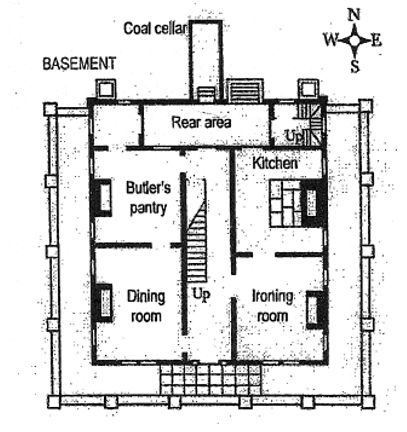3. Basement Level
Basement
Raised basements like this are called daylight or English basements. The basement contained the working areas of the house including the kitchen, ironing/children’s, butler’s pantry, and dining room. The only formal space that guests of the Bellamys occupied in the basement was the formal dining room, one of the larger rooms in the home. It is the only room in the basement with a coal-burning fireplace and crown molding. Sarah, the enslaved cook, worked over the coal-burning stove in the kitchen while Rosella used the ironing room at least one day per week. We speculate the Bellamy’s youngest children dined in this room while the older Bellamy children ate with their parents in the formal dining room across the hall. The floors are heart pine as is the trim throughout the basement. The inside staircase is cypress, but the enslaved workers and later paid servants used the outside stairs just beyond the outer kitchen door. Those outside stairs facilitated workers to the main levels of the home.
Raised basements like this are called daylight or English basements. The basement contained the working areas of the house including the kitchen, ironing/children’s, butler’s pantry, and dining room. The only formal space that guests of the Bellamys occupied in the basement was the formal dining room, one of the larger rooms in the home. It is the only room in the basement with a coal-burning fireplace and crown molding. Sarah, the enslaved cook, worked over the coal-burning stove in the kitchen while Rosella used the ironing room at least one day per week. We speculate the Bellamy’s youngest children dined in this room while the older Bellamy children ate with their parents in the formal dining room across the hall. The floors are heart pine as is the trim throughout the basement. The inside staircase is cypress, but the enslaved workers and later paid servants used the outside stairs just beyond the outer kitchen door. Those outside stairs facilitated workers to the main levels of the home.





